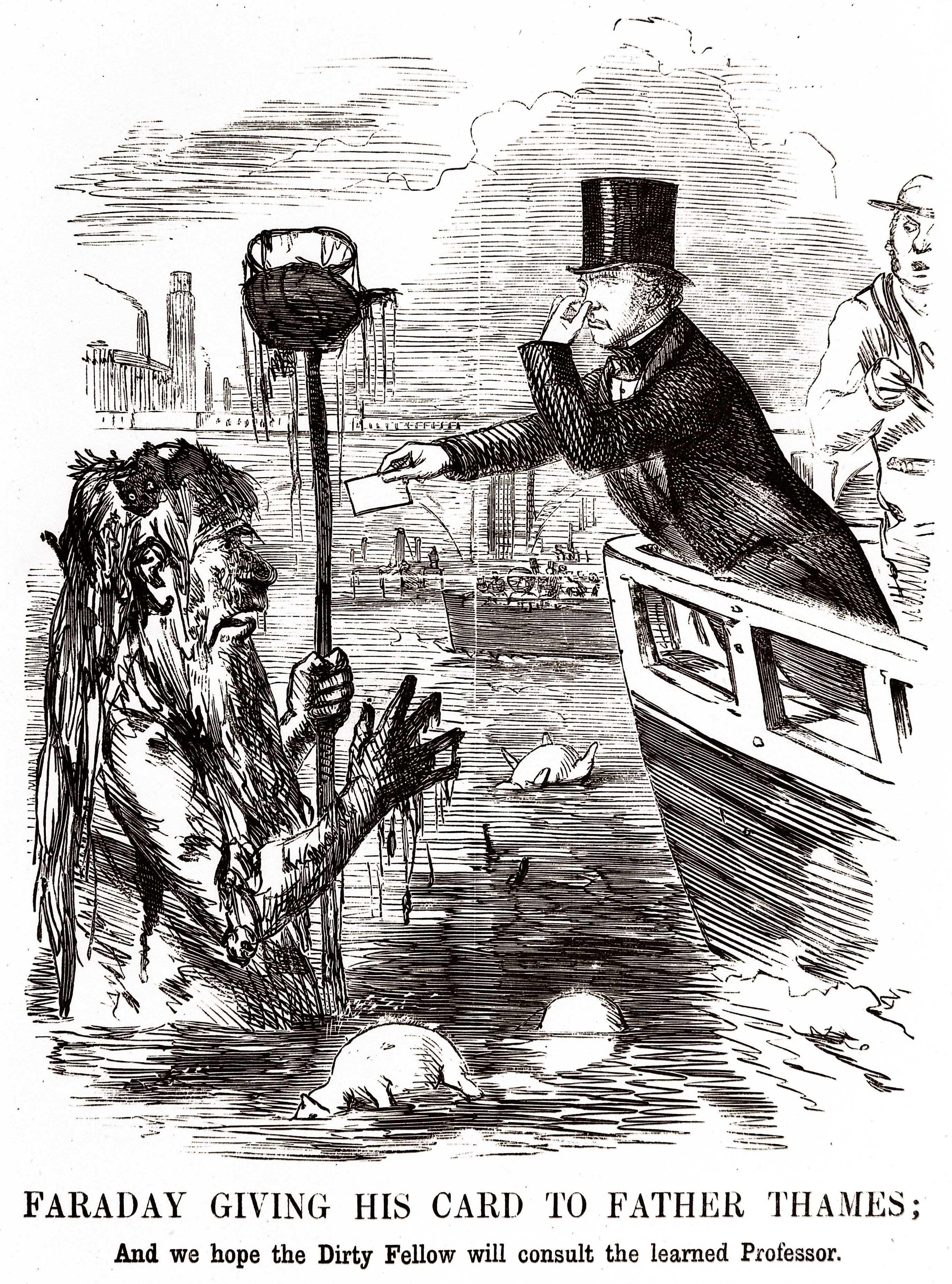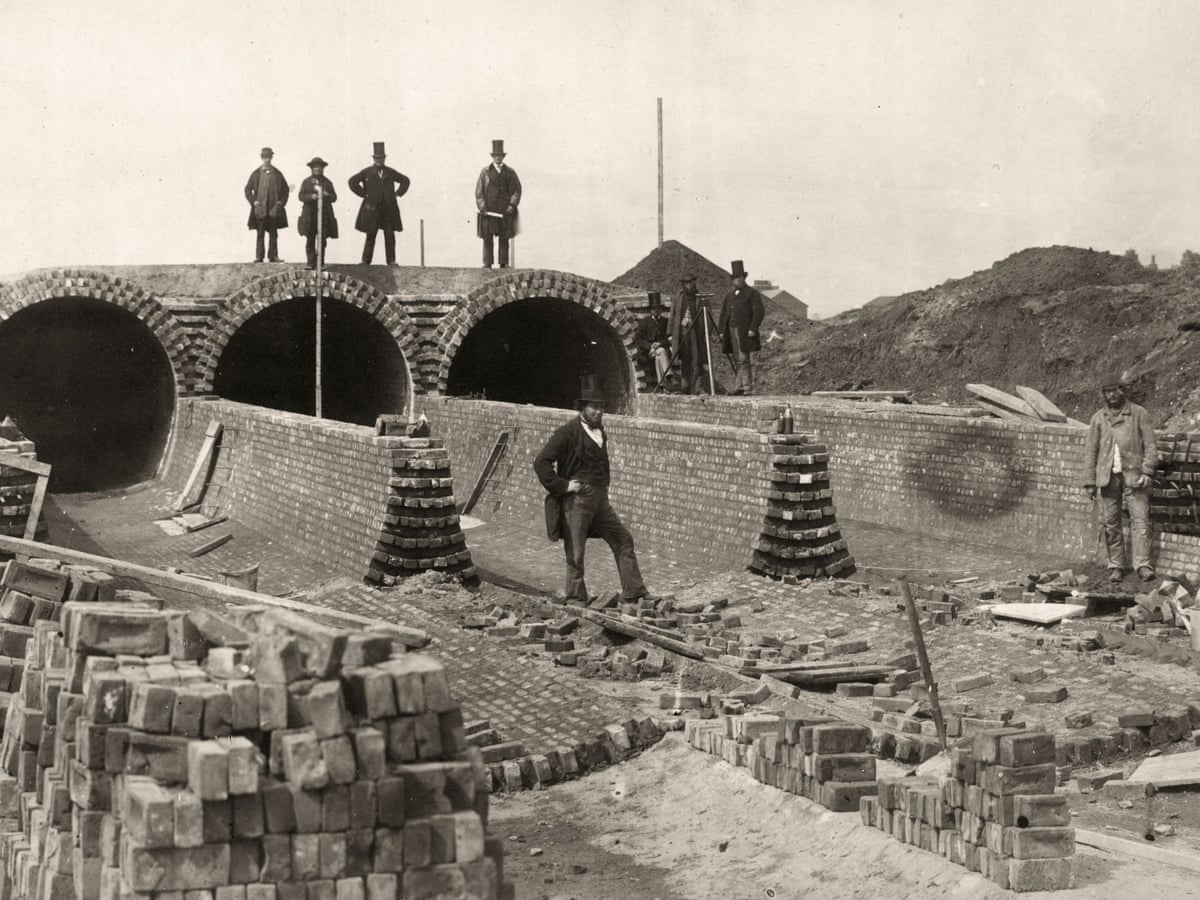The Great Stink was a significant event in London’s history. It happened in the summer of 1858.
The Thames River became unbearably smelly due to sewage. Imagine a city where the air is thick with a foul odor. This was London in the summer of 1858. The Great Stink was not just a minor inconvenience; it was a public health crisis.
The city’s outdated sewer system could not handle the waste, leading to a terrible smell that hung over the city. Parliament had to take action. The Great Stink eventually led to major changes in London’s infrastructure. It was a wake-up call for the need for better sanitation. This event shows how important clean water and good sanitation are for public health.

Credit: www.historic-uk.com
Introduction To The Great Stink
The Great Stink of 1858 was a significant event in London’s history. During this time, the River Thames emitted a foul odor. The smell was so bad that it disrupted daily life. Lawmakers and citizens alike were affected. The event highlighted the city’s sanitation issues.
Historical Context
The Great Stink occurred during the summer of 1858. London was rapidly growing at the time. The city’s sewage system could not keep up with the population. Waste flowed directly into the River Thames. Hot weather worsened the smell. The stench became unbearable.
Before the Great Stink, London’s sanitation was poor. Many people threw waste into the streets. Rain would wash it into the river. This caused widespread pollution. Cholera outbreaks were common. The river was a health hazard.
Significance Of The Event
The Great Stink had a huge impact on public health. It forced the government to act. They created new sanitation laws. These laws improved waste management. The event also led to the construction of new sewers. Engineer Joseph Bazalgette designed them. His work transformed London’s infrastructure.
The event raised awareness about public health. People realized the importance of clean water. It marked the beginning of modern sanitation. The Great Stink changed how cities manage waste. It was a turning point in urban planning.
Causes Of The Great Stink
The Great Stink of 1858 was a significant event in London’s history. It occurred due to various factors, including the rapid industrialization and flaws in the city’s sewage system.
Industrial Revolution Impact
The Industrial Revolution changed London. The city grew quickly. Factories increased production. More waste was produced. This waste included chemicals and other pollutants. Factories dumped waste into the River Thames. The river became a dumping ground.
People moved to London for jobs. The population explosion led to more waste. This waste overwhelmed the existing systems. The river became contaminated. The water quality worsened. The increased waste and pollution contributed to the Great Stink.
Sewage System Flaws
London’s sewage system was outdated. It was not designed for a large population. The system was over 200 years old. It could not handle the waste load. Sewage flowed directly into the River Thames. This caused severe contamination.
The sewers were open and poorly maintained. Waste collected in the streets. During heavy rains, the sewers overflowed. This spread the waste further. The smell was unbearable. The poor design and maintenance of the system were major causes of the Great Stink.
| Cause | Description |
|---|---|
| Industrial Waste | Factories dumped pollutants into the river. |
| Population Growth | More people produced more waste. |
| Outdated Sewers | The system was old and poorly maintained. |
| Overflowing Sewers | Heavy rains caused sewers to overflow. |
- Industrial Revolution led to increased waste.
- Population growth overwhelmed the sewage system.
- Poor sewer design caused waste to collect in streets.
- Heavy rains spread waste further.
Immediate Effects On London
The Great Stink of 1858 had a profound impact on London. The city faced immediate challenges that affected both public health and daily life. The Thames became a river of filth, causing discomfort and danger to the city’s residents. Let’s explore the specific health implications and daily life disruptions caused by this crisis.
Health Implications
The polluted water of the Thames led to serious health issues. Cholera outbreaks became common, claiming many lives. Contaminated water caused severe gastrointestinal illnesses. The stench itself caused nausea and headaches. Hospitals filled with patients suffering from waterborne diseases. The mortality rate increased sharply during this period.
Daily Life Disruptions
Daily life in London changed drastically. The foul odor made it hard to breathe. People avoided going outside. Businesses near the Thames suffered losses. Markets struggled as fewer people ventured out to shop. Public events were canceled or poorly attended.
Transportation was also affected. River traffic decreased due to the unbearable smell. Those living near the river had to keep windows shut, regardless of the heat. The stench infiltrated homes, making indoor life uncomfortable. Londoners faced an unprecedented crisis in their daily routines.

Credit: www.simonandschuster.com
Public Reaction And Panic
The Great Stink of 1858 caused widespread fear and disgust in London. The foul smell from the River Thames affected everyone. People felt trapped and helpless against the awful stench.
The public’s reaction was swift and intense. Many believed the air itself was dangerous. Crowds gathered in the streets, discussing their worries. Panic spread quickly as the smell worsened.
Media Coverage
Newspapers reported the Great Stink daily. Headlines screamed about the health risks. Articles described the unbearable smell in vivid detail. Journalists interviewed citizens about their experiences. The media’s focus increased public fear and awareness.
Government Response
The government could not ignore the crisis. Politicians debated solutions in parliament. They realized urgent action was needed. Plans for a new sewer system were discussed. Engineers like Joseph Bazalgette were called upon to help. The government promised to fix the problem quickly.
Efforts To Tackle The Crisis
The Great Stink of 1858 was a significant event in London’s history. The unbearable stench from the River Thames led to a public health crisis. Efforts to tackle the crisis were crucial in improving the city’s sanitation and public health.
Initial Measures
The first steps to address the Great Stink involved quick fixes. Lime was spread over the riverbanks to mask the smell. Large amounts of chalk and chloride of lime were dumped into the Thames. These measures helped to reduce the odor temporarily. But they did not solve the root problem. People realized that more effective solutions were needed.
Introduction Of Sanitation Reforms
Recognizing the need for long-term solutions, the government took action. They appointed Joseph Bazalgette, a civil engineer, to design a new sewer system. His plan included over 1,100 miles of sewers to divert waste away from the river. The new system greatly improved the city’s sanitation. It reduced the spread of diseases like cholera. These reforms marked a significant step towards modern urban sanitation.
Role Of Joseph Bazalgette
The Great Stink of 1858 was a crisis in London. The River Thames was full of sewage. The smell was unbearable. Cholera outbreaks were common. The city needed a solution. Joseph Bazalgette played a key role. He engineered an innovative sewer system. His work changed London forever.
Innovative Solutions
Bazalgette designed a network of intercepting sewers. These sewers carried waste away from the Thames. He used gravity and pumping stations. This ensured sewage flowed to treatment plants. Bazalgette’s design was groundbreaking. He used concrete and brick for durability. This was essential for long-term use.
He also built embankments along the Thames. These were not just for sewage. They also provided new roads. This improved transport in London. His solutions were both practical and innovative.
Long-term Impact
Bazalgette’s work had a lasting impact. His sewer system is still in use today. It has been updated, but the core design remains. This shows the strength of his engineering. Bazalgette’s sewers reduced cholera and other diseases. This improved public health in London.
His work also influenced other cities. Many adopted similar designs. Bazalgette’s legacy is clear. He made London a safer, cleaner place.
Today, he is remembered as a pioneer. His innovative approach saved lives. Bazalgette’s role in ending the Great Stink is celebrated. He showed the power of engineering in solving public health crises.
Transformation Of London’s Infrastructure
The Great Stink of 1858 was a turning point for London. The foul smell from the Thames forced action. This led to the transformation of London’s infrastructure. The city needed a modern sewage system and better urban planning.
Modern Sewage System
Joseph Bazalgette designed the new sewage system. His plan was genius. He built 1,100 miles of sewers. These sewers took waste away from the Thames. This stopped the foul smell.
The modern sewage system used large interceptor sewers. They moved waste to treatment plants. Bazalgette’s design still works today. It’s a model for cities worldwide.
Urban Planning Changes
The Great Stink showed the need for better urban planning. Streets were redesigned. New parks and open spaces were added. These changes improved public health.
Urban planning included better waste management. Waste collection became regular. This kept streets clean. Cleaner streets reduced disease.
New laws also helped. They controlled building standards. This ensured homes had proper sanitation.
| Aspect | Pre-Great Stink | Post-Great Stink |
|---|---|---|
| Sewage Disposal | Directly into the Thames | Interceptor sewers |
| Public Health | Frequent cholera outbreaks | Reduced disease |
| Urban Planning | Unplanned growth | Structured and regulated |
- Cleaner streets
- Healthier living conditions
- Improved waste management

Credit: www.theguardian.com
Legacy Of The Great Stink
The Great Stink of 1858 was a turning point for London. This event forever changed how the city managed public health and sanitation. Its legacy continues to impact modern environmental and policy frameworks.
Environmental Awareness
The Great Stink raised awareness about the importance of clean water. People realized the dangers of polluted rivers. The Thames, once a symbol of prosperity, became a cautionary tale.
Residents began to demand better environmental practices. They understood that their health depended on a clean environment. This shift in mindset was crucial for future generations.
Schools started teaching the importance of sanitation. Public campaigns promoted clean living spaces. Gradually, people changed their habits to protect their surroundings.
Policy Changes
The Great Stink led to significant policy changes. The government took action to improve public health. They invested in modern sewage systems.
One major step was the creation of the Metropolitan Board of Works. This body was responsible for building proper sewage infrastructure.
| Year | Policy | Impact |
|---|---|---|
| 1858 | Public Health Act | Improved sanitation laws |
| 1865 | Sewage System Construction | Cleaner water supply |
These policies set the foundation for modern sanitation standards. They ensured that public health was a priority. The legacy of the Great Stink lives on in these lasting changes.
Lessons Learned
The Great Stink of 1858 in London left a lasting impact on public health and urban planning. It taught us valuable lessons about the importance of proper infrastructure and proactive environmental measures. These lessons remain relevant today as cities continue to grow and face new challenges.
Importance Of Infrastructure
The Great Stink highlighted the critical need for effective sewage systems. Before this event, London’s sewage flowed directly into the River Thames. This caused severe pollution and a foul smell that affected the entire city. The construction of a modern sewer system by Joseph Bazalgette was a direct response to this crisis.
The new system included:
- Underground sewers to transport waste away from the city.
- Improved drainage to prevent flooding.
- Waste treatment facilities to clean the water before release.
These changes greatly improved public health. They reduced the spread of waterborne diseases like cholera. Proper infrastructure is crucial for any city to ensure the health and well-being of its residents.
Proactive Environmental Measures
The Great Stink also taught the importance of proactive environmental measures. The crisis was a result of neglect and poor planning. Authorities learned that they must address environmental issues before they become crises.
Some proactive measures include:
- Regular maintenance of sewage and drainage systems.
- Monitoring water quality to detect pollution early.
- Implementing green infrastructure like parks and green roofs.
These measures help prevent environmental problems. They also promote sustainability and improve the quality of life for city dwellers. The lessons from the Great Stink remind us to take action now to avoid future disasters.
FAQs
What Was The Great Stink?
The Great Stink was a severe pollution event in London during the summer of 1858. The River Thames was heavily contaminated with raw sewage, causing an unbearable stench.
Why Did The Great Stink Happen?
The Great Stink occurred due to the lack of an effective sewage system. Raw sewage was dumped directly into the River Thames, leading to severe pollution and an overwhelming smell.
How Did The Great Stink Affect London?
The Great Stink had a significant impact on London’s population. It caused public health crises, disrupted daily life, and pressured the government to improve sanitation infrastructure.
What Was The Solution To The Great Stink?
The solution was the construction of an extensive sewer system. Engineer Joseph Bazalgette designed and implemented this system, which significantly improved London’s sanitation.
Conclusion
The Great Stink highlighted a crucial need for better sanitation. It pushed for advancements in public health. Cleaner water and improved sewage systems emerged. These changes saved countless lives. The event taught valuable lessons. Modern cities still benefit from those improvements.
Understanding history helps us prevent future issues. The Great Stink remains a pivotal moment. It reminds us of the importance of clean living conditions. Let’s continue to value and protect our public health systems.








